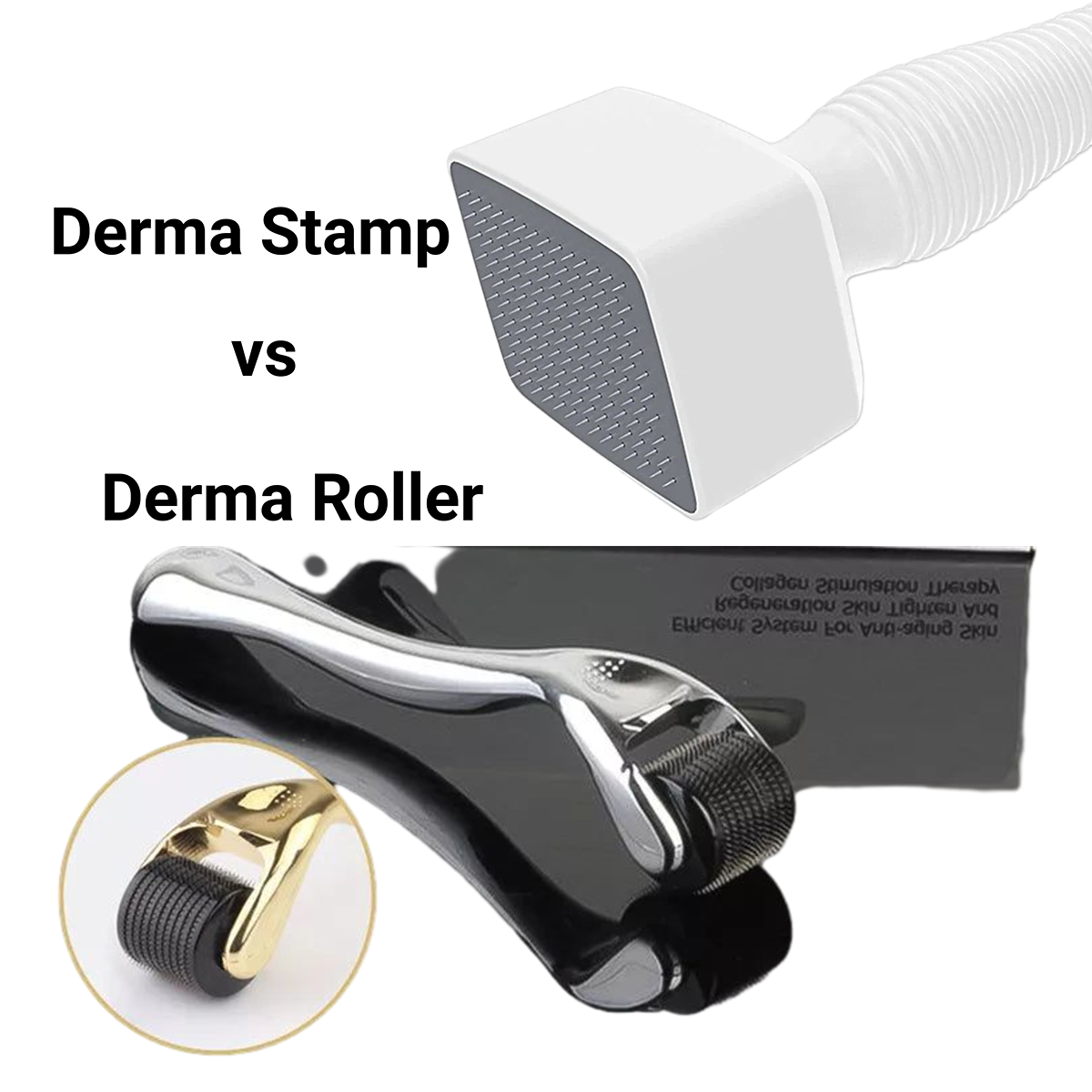
Derma Stamp vs. Derma Roller: Which Microneedling Tool Is Right for You?
| MegaCityVip Studio
Microneedling has become a popular skincare technique for addressing various skin concerns, such as acne scars, fine lines, and uneven skin tone. Among the tools available for at-home microneedling, the derma stamp and derma roller are two of the most common. While they share the same goal of stimulating collagen production to improve skin texture and appearance, these tools have some key differences that make them suited for different needs. In this blog, we'll explore the differences between a derma stamp and a derma roller to help you choose the right tool for your skincare journey.
What is a Derma Stamp?
A derma stamp is a microneedling tool designed like a stamp, with a handle and a head covered in fine, tiny needles arranged in a grid pattern. It’s used in a stamping motion, allowing for precise targeting of specific areas of the skin. The derma stamp is particularly useful for spot treatments on issues like acne scars, small wrinkles, and hyperpigmentation.
What is a Derma Roller?
A derma roller features a cylindrical roller head covered with fine needles, attached to a handle. As the name suggests, it is rolled across the skin to create micro-injuries that promote the skin’s natural healing process. Derma rollers are ideal for treating larger surface areas, such as the entire face, neck, or even the body.
Key Differences Between Derma Stamp and Derma Roller
1. Design and Shape
- Derma Stamp: The stamp-like design allows for a straight, vertical entry of needles into the skin. The needles are arranged in a flat, grid-like configuration, which enables precise application.
- Derma Roller: With its cylindrical roller head, the needles roll into the skin at an angle, covering more area quickly. The roller design makes it suitable for broader treatments.
2. Application and Precision
- Derma Stamp: Ideal for precise, targeted treatments. You can focus on specific problem areas without affecting surrounding skin, making it great for localized scars or wrinkles.
- Derma Roller: Best for general, large-area treatments. Rolling the device across the skin allows for even coverage over extensive areas but with less precision than the stamp.
3. Skin Impact and Trauma
- Derma Stamp: Causes less overall trauma since the needles enter and exit the skin vertically. This reduces the risk of unnecessary damage and minimizes irritation, making it gentler for those with sensitive skin.
- Derma Roller: The rolling action means needles enter the skin at an angle, which can cause more trauma to the surrounding tissue. This may increase the risk of irritation, especially on delicate skin.
4. Comfort and Ease of Use
- Derma Stamp: Generally more comfortable for spot treatments due to its stamping action. It allows for better control over the pressure and depth, making it ideal for areas that need more careful attention.
- Derma Roller: Can be slightly less comfortable because of the rolling motion and less control over pressure. However, it’s efficient for covering large areas quickly.
5. Results and Healing Time
- Derma Stamp: The focused treatment of specific areas can lead to quicker, more noticeable improvements in targeted issues like deep scars. Healing tends to be faster because there’s less overall skin disruption.
- Derma Roller: Provides overall skin rejuvenation and improvement in texture and tone. However, the broader treatment approach can mean more extensive skin disruption and potentially longer healing times.
Which One Should You Choose?
The choice between a derma stamp and a derma roller largely depends on your specific skin concerns and the areas you want to treat. If you’re looking to address targeted issues, such as acne scars or localized wrinkles, a derma stamp offers precision and reduced trauma. On the other hand, if your goal is overall skin improvement across larger areas, a derma roller may be the more efficient choice.
Tips for Safe and Effective Microneedling
- Start with Clean Skin: Always begin with thoroughly cleansed skin to prevent infection.
- Sanitize the Tool: Disinfect your derma stamp or roller before and after each use.
- Follow Aftercare Instructions: Use gentle, soothing products post-treatment and avoid harsh ingredients like retinoids or acids for a few days.
- Consult a Professional: Especially if you have sensitive skin or specific conditions, seek advice from a skincare professional before starting microneedling treatments.
Conclusion
Both derma stamps and derma rollers are effective tools for enhancing your skincare routine through microneedling. By understanding their differences, you can select the tool that best suits your needs, leading to better, more targeted results. Remember, proper technique and aftercare are essential for maximizing benefits and ensuring the safety of your skin.

Leave a comment
Your email address will not be published.